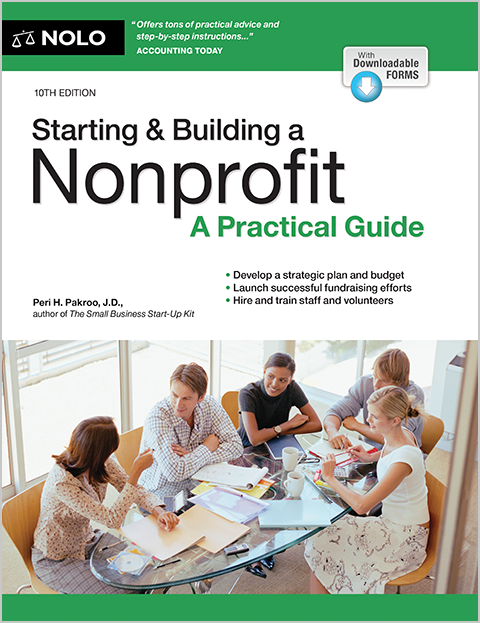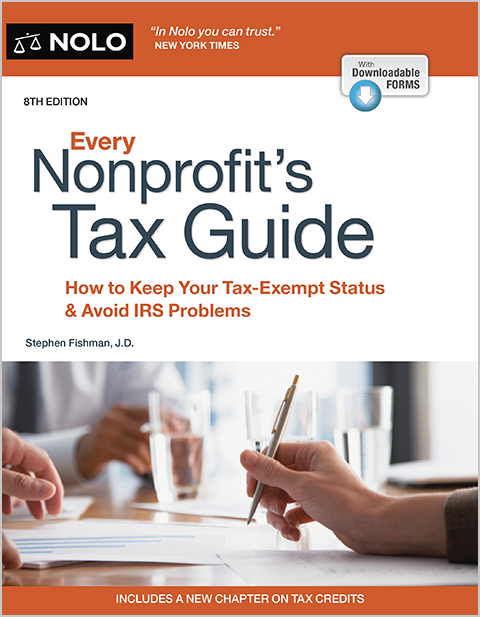Find out how to go about dissolving a nonprofit corporation in your state.
Whatever the underlying reason may be to the closure of your Pennsylvania nonprofit corporation, you will need to go through a process called dissolution. Dissolution requires a vote or other formal authorization, the filing of key documents with government agencies, and a group of other tasks collectively known as winding up the corporation
This article only covers the most basic kind of voluntary dissolution of a typical Pennsylvania 501(c)(3) nonprofit corporation that's already doing business. There may be different rules or procedures for other types of nonprofits, or for other situations such as an involuntary dissolution.
Authorizing Dissolution
Pennsylvania's Nonprofit Corporation Law ("NCL") provides for voluntary dissolution through any of three statutory methods:
- action by the directors followed by a vote of the members
- petition by certain members, board action, and a vote of the members; or
- if there are no members, action by the directors.
Regardless of which of method you use, you will need a resolution to dissolve. This can be a basic document stating the intention to close down the organization. However, in many cases, the resolution will include a plan of dissolution that provides details of the dissolution process (including, for example, how assets will be distributed).
If your nonprofit has voting members, then, under the first statutory method, the board must adopt a resolution to dissolve and then submit it to the members. Generally, board approval of the plan will require a majority vote of the directors, but you should check your bylaws for alternate board adoption requirements. Members must then meet and vote to approve the resolution. Under the NCL, approval of dissolution requires a majority of the members' votes.
Under the second statutory method, dissolution is triggered by the petition of members representing at least 10% of the member votes. The petition is basically a resolution to dissolve presented by the petitioning members to the board of directors. The board then takes steps to hold a member vote on the matter, as described just above.
The third statutory method applies if your nonprofit does not have members. In those situations, it is up to the board alone to approve the resolution to dissolve. Board approval generally requires the vote of a majority of the directors. However, check your bylaws for alternate rules.
Finally, apart from the foregoing three statutory methods, the NCL also allows you to use any other dissolution procedure contained in your nonprofit's bylaws.
Make sure to properly record the resolution to dissolve, plan of dissolution, directors' votes, and, where necessary, members' votes. You'll need this information for filings with the state and the IRS.
"Winding Up"
Following dissolution, your nonprofit continues to exist only for the purpose of taking care of certain final matters that, collectively, are known as "winding up" the organization. Under the NCL, winding up must proceed "as speedily as possible." Key winding up tasks include:
- collecting all sums due to the nonprofit
- converting into cash all assets the conversion of which into cash is required to discharge liabilities
- discharging or making adequate provision for discharging all liabilities; and
- properly distributing any remaining assets.
It may be appropriate to designate one or more officers and/or directors to handle these matters.
Generally speaking, you can only distribute money and property after you have paid off all of your nonprofit's debts. A dissolving 501(c)(3) organization must distribute its remaining assets for tax-exempt purposes. In practice, this usually means distributing assets to one or more other 501(c)(3) organizations. (One possible exception to this general rule is for property loaned to your nonprofit on the condition that it be returned in case of dissolution; that property generally must be returned to whoever loaned it.)
Pennsylvania also more specifically requires you to apply to the Orphans' Court ("OC") for permission to distribute "property committed to charitable purposes." This likely would include most or all of your nonprofit's property. Moreover, the OC requires you to notify the Attorney General ("AG") of your nonprofit's proposed distribution of assets. Your notice to the AG should include your plan of dissolution. For guidance on how to get permission from the OC and how to give proper notice to the AG, you should consult with a lawyer.
Notice to Creditors
After your nonprofit has approved dissolution, you must "immediately" give notice of the dissolution. To meet this requirement, you must:
- publish the notice in an appropriate county law reporter and/or in a newspaper
- send a copy of the notice to each of your nonprofit's known creditors and other claimants by certified or registered mail; and
- mail notice to each municipal corporation where your nonprofit has a place of business.
There are a variety of other, more specific rules regarding both giving notice and responding to claims. Therefore, when dealing with giving notice, you should strongly consider getting assistance from a lawyer.
State Tax Clearance
Pennsylvania has special tax-related requirements that you must fulfill before you can finish closing your nonprofit. You cannot complete the final step, filing articles of dissolution, until you have received clearance from the Department of Revenue ("DOR") and the Department of Labor and Industry ("DLI"). To obtain the necessary tax clearance certificates, you must file DOR Form REV-181 (Application for Tax Clearance Certificate), including a Distribution of Assets Schedule, with the DOR and DLI. You should complete, but not sign, the form, make one copy, sign each copy separately, and then mail one signed copy apiece to each of the two agencies. You can find more detailed instructions, including mailing addresses, by downloading the informational document found at this DOR link. It can take a year or more to receive your tax clearance certificates from the DOR and DLI.
Articles of Dissolution
After dissolving and winding up your corporation, including discharging all liabilities, properly distributing remaining assets, and obtaining the necessary tax clearance certificates, you must file articles of dissolution with the Department of State ("DOS"). The articles must contain:
- the name of your nonprofit
- the address of your nonprofit's registered office
- the statute under which the nonprofit was incorporated and the date of incorporation
- the names and addresses of the directors and officers
- the manner in which the resolution to dissolve was adopted
- one of the following statements:
- all liabilities of the nonprofit have been discharged or adequate provision has been made therefor
- the nonprofit's assets are not sufficient to discharge the nonprofit's liabilities, and all assets have been fairly and equitably applied, as far as they will go, to the payment of such liabilities; or
- the nonprofit has elected to proceed under the Post-dissolution Provision for Liabilities
- one of the following statements:
- all remaining assets, if any, have been distributed as provided in the NCL; or
- the nonprofit has elected to proceed under the Post-dissolution Provision for Liabilities and any remaining assets will be distributed as required in that provision
- for nonprofits not dissolving under the Post-dissolution Provision for Liabilities, a statement that no actions or proceedings are pending against the nonprofit in any court, or that adequate provision has been made for the satisfaction of any judgment or decree that may be obtained against the nonprofit in each pending action or proceeding; and
- for nonprofits not dissolving under the Post-dissolution Provision for Liabilities, a statement that notice of the winding-up proceedings of the corporation was mailed by certified or registered mail to each known creditor and claimant and to each municipal corporation in which the corporation has a place of business in Pennsylvania.
A form for the articles of dissolution (DSCB:15-1977/5977-3) is available for download from the DOS website. There is a $70 fee to file the articles. Make sure to include your tax clearance certificates with your filing.
Federal Tax Note
For federal tax purposes, you'll need to file IRS Form 990 or IRS Form 990-EZ. You must include a completed Schedule N (Liquidation, Termination, Dissolution, or Significant Disposition of Assets), as well as copies of your articles of dissolution, resolution to dissolve, and plan of dissolution. When completing Form 990 or Form 990-EZ, you'll need to check the "Terminated" box in the header area on Page 1 of the return. For additional, more specific guidance, check out Every Nonprofit's Tax Guide, by Stephen Fishman (Nolo), go to the IRS website, or consult with a tax professional.
Additional Information
You can find additional information, such as forms, mailing addresses, phone numbers, filing fees, and tax information on the DOS website and DOR website.
Dissolving and winding up your nonprofit corporation is only one piece of the process of closing your organization. For further, general guidance on many of the other steps involved, check Nolo's 20-point checklist for closing a business and the Nolo article on what you need to know about closing a business.



